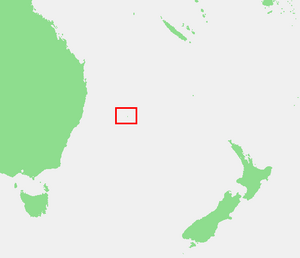List of butterflies of Lord Howe Island facts for kids
Lord Howe Island is a small, beautiful island in the Pacific Ocean. It is part of Australia and is known for its amazing nature. This special place is home to many different kinds of animals and plants. Among them are many colorful butterflies!
This article will introduce you to some of the fascinating butterflies that live on Lord Howe Island. Butterflies are insects with four wings, often brightly colored. They start their lives as caterpillars before changing into the flying adults we know.
Contents
Butterfly Families of Lord Howe Island
Butterflies are grouped into different families based on their features. Each family has unique characteristics. Let's explore the main butterfly families found on Lord Howe Island.
Skippers (Hesperiidae)
Skippers are a family of butterflies that often look a bit like moths. They have stout bodies and hooked antennae. They get their name because of their fast, darting flight, almost like they are "skipping" through the air.
Hesperiinae: Grass Skippers
- Taractrocera papyria (Boisduval, 1832)
Swallowtails (Papilionidae)
Swallowtails are usually large and colorful butterflies. Many of them have tail-like extensions on their hindwings, which look a bit like the tails of swallows. This is how they got their name!
Papilioninae: True Swallowtails
- Graphium macleayanus insulana (Waterhouse, 1920)
- Papilio aegeus aegeus (Donovan, 1805)
- Papilio demoleus sthenelus (Macleay, 1826)
Whites and Sulphurs (Pieridae)
This family includes many common butterflies. They are often white, yellow, or orange. You might see them fluttering around gardens and fields.
Coliadinae: Sulphurs and Yellows
- Catopsilia pyranthe crokera (MacLeay, 1826)
- Eurema brigitta australis (Wallace, 1867)
- Eurema smilax smilax (Donovan, 1805)
Pierinae: Whites and Orange-tips
- Appias paulina ega (Boisduval, 1836)
- Belenois java teutonia (Fabricius, 1775)
- Belenois java peristhene (Boisduval, 1859)
Blues and Coppers (Lycaenidae)
This is a very large family of small butterflies. Many of them have bright blue, copper, or iridescent wings. Their caterpillars often have a special relationship with ants.
Theclinae: Hairstreaks
- Lucia limbaria (Swainson, 1833)
Polyommatinae: Blues
- Candalides xanthospilos (Hübner, 1817)
- Lampides boeticus (Linnaeus, 1767)
- Zizina labradus labradus (Godart, 1824)
- Everes lacturnus pulchra (Rothschild, 1915)
- Danaus plexippus plexippus (Linnaeus, 1758)
- Euploea corinna (Macleay, 1826)
Brush-footed Butterflies (Nymphalidae)
This is the largest family of butterflies. They are called "brush-footed" because their front pair of legs is often small and hairy, looking like brushes. This family includes many well-known butterflies like monarchs and admirals.
Satyrinae: Browns and Satyrs
- Melanitis leda bankia (Fabricius, 1775)
Danainae: Milkweed Butterflies
- Danaus petilia (Stoll, 1790)
Charaxinae: Leafwings and Emperors
- Polyura sempronius tiberius (Waterhouse, 1920)
- Hypolimnas bolina nerina (Fabricius, 1775)
- Junonia villida calybe (Godart, 1819)
- Cynthia kershawi (McCoy, 1868)
- Bassaris itea (Fabricius, 1775)


